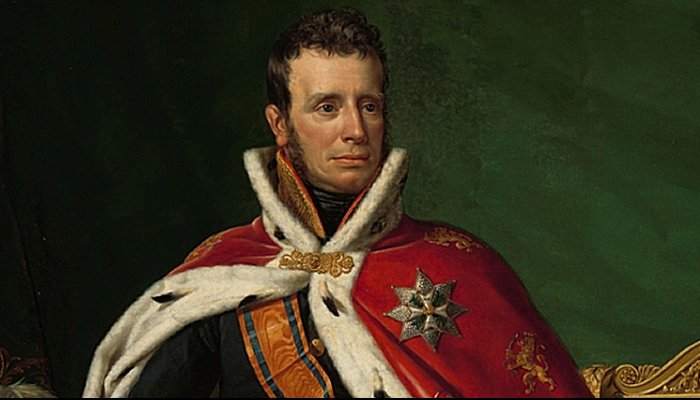Conny Waters – AncientPages.com – Showing your face at dinners and parties at court: it was the way to get noticed by the king in William I’s time. Joost Welten’s latest book reveals how, during the reign of William I, the elite danced around his throne both literally and figuratively.

Joseph Paelinck, Portret van Willem I, koning der Nederlanden, 1819. Oil paint on canvas. Amsterdam, Rijksmuseum.
At the beginning of the nineteenth century, William I governed the United Kingdom of the Netherlands, which included the territories that today make up Belgium and Luxembourg. Contemporary historians have so far been unanimous in their negative ᴀssessment of the period: there was no lively political debate and William I’s court was the dullest in Europe.
According to Welten, that picture is in urgent need of revision. ‘From the perspective of an early modern historian, you see very different phenomena emerge. In the time of William I, the private life of the monarch, his court and politics cannot be separated and are constantly intertwined, just as was common in the ancien régime.’
In the king’s sights
In the book Dancing around William I’s throne: the courts in The Hague and Brussels 1813-1830, Welten gives an insight into court life. ‘The king surrounded himself with powerful people – especially princes and dukes from the southern provinces – to show the people that the elite were behind his rule,’ he says. At the same time, that elite themselves liked to take advantage of opportunities at court.
‘The king regularly organised balls with between 500 and 1,200 guests. Today, this is seen as entertainment, but for those present then, it was simply work. By being present at such a party, you showed the world how important you were,’ Welten explains.
He compares it to vloggers visiting an event and showing their presence there through videos and pH๏τos. ‘To be important, you have to be visible at those moments.’
In the nineteenth century, it was mainly the attention of one person that counted: William I. ‘You had to make sure the king had you in his sights. He was at the head of a powerful patronage network. He appointed and promoted every civil servant and officer in the army and navy, as well as every judge, professor and diplomat. If you wanted to be even vaguely successful, you had to be in the king’s favour,’ says Welten.
Tactical dance
Merely attending the king’s weekly audience was not enough. The elite performed a tactical ‘dance’ to climb higher up the ladder. ‘People spent a lot of time investing in their networks to gain a more distinguished position within the elite,’ says Welten. Those who did not know the king personally might have known one of the queen’s court ladies who could whisper something to her. ‘The more connections you had, the stronger your position was.’
And those who had secured a high position close to the king became more interesting to other people themselves. ‘That is why I called the book Dancing around the throne,’ Welten explains.
‘There was not only literal dancing, but also figurative dancing to gain an increasingly central position in the network around the king.’
Source
Written by Conny Waters – AncientPages.com Staff Writer





